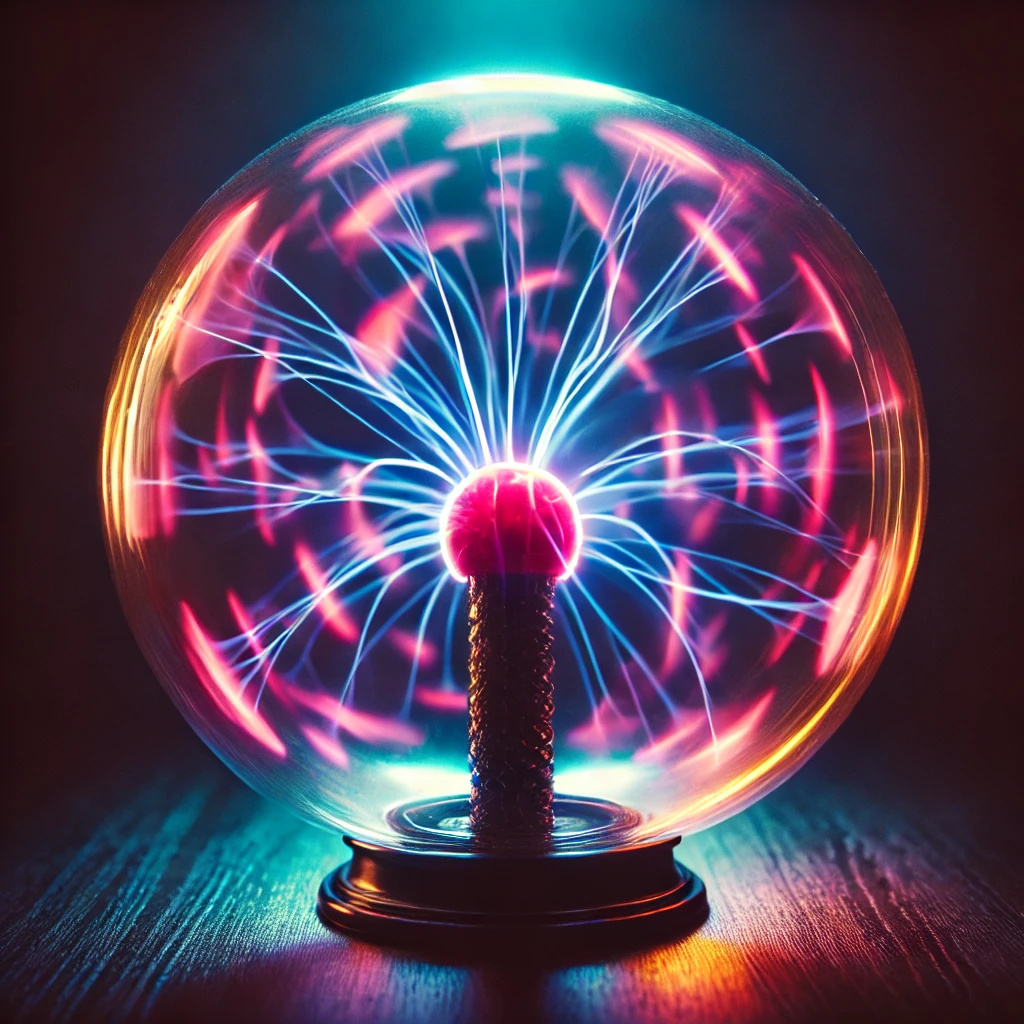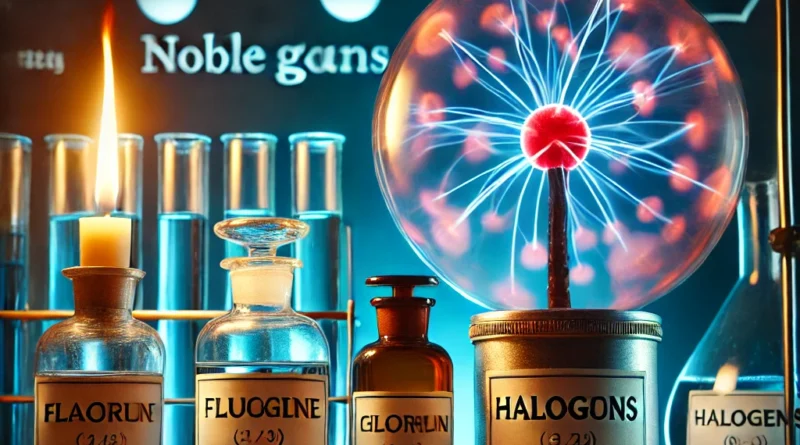Does Halogen React to Plasma Ball? A Comprehensive Guide
Plasma balls are mesmerizing devices that captivate us with their glowing, dynamic filaments of light. These fascinating gadgets operate on the principles of physics, creating a unique experience when touched or observed. But what happens when halogens – known for their high reactivity – are introduced to this environment? This guide will delve into the interaction between halogens and plasma balls, exploring the science, potential reactions, and important safety considerations.
What is a Plasma Ball?
The Basics of Plasma Balls
A plasma ball is a glass sphere filled with noble gases like neon, argon, and xenon. At its center is an electrode powered by a high-voltage transformer, which generates high-frequency alternating current (AC). When electricity flows through the gases, it ionizes them, creating colorful plasma filaments that stretch from the electrode to the glass surface. These filaments glow due to the excitation of gas molecules, emitting light as they return to their ground state.
Why Are Noble Gases Used?
Noble gases are inert, meaning they rarely react chemically. This property ensures the plasma ball’s functionality and stability, allowing the device to operate safely without risk of chemical reactions inside the sphere. The choice of gases also determines the filament colors, such as neon’s reddish-orange or xenon’s purple glow.
Understanding Halogens
What Are Halogens?
Halogens are a group of nonmetals in the periodic table, including fluorine, chlorine, bromine, iodine, and astatine. These elements are highly reactive due to their seven valence electrons, making them eager to gain one more electron to achieve stability. This reactivity is why halogens are used in various applications, from disinfectants to industrial compounds.
Properties of Halogens
- Reactivity: Halogens can react with many substances, including metals and nonmetals.
- States of Matter: Fluorine and chlorine are gases, bromine is a liquid, and iodine is a solid at room temperature.
- Toxicity: Most halogens are hazardous, with chlorine and fluorine being particularly toxic.
Can Halogens React in a Plasma Ball?
Theoretical Interactions
If halogen gases were introduced to a plasma ball, their reactivity could significantly alter the behavior of the plasma. Halogens would likely ionize under the high-voltage electric field, producing ions and potentially reacting with other substances present in the plasma ball. For example:
- Fluorine: Could form compounds with glass or other materials.
- Chlorine: Might react with residual moisture or the electrode material.
- Bromine and Iodine: Could create colorful yet unstable plasmas due to their unique properties.
Impact on Plasma Filaments
The introduction of halogens might change the color, intensity, and behavior of the plasma filaments. While noble gases produce stable, predictable effects, halogens could lead to erratic or diminished filament formation.
Safety Concerns
Why It’s Risky to Use Halogens
Halogens are not used in plasma balls for several reasons:
- Toxicity: Chlorine and fluorine are dangerous to inhale, and bromine is corrosive.
- Reactivity: These elements could damage the internal components of the plasma ball, reducing its lifespan or causing malfunctions.
- Unpredictable Behavior: Halogens’ high reactivity could lead to uncontrolled chemical reactions, posing risks to users and the environment.
Manufacturer Design Choices
Plasma ball manufacturers deliberately avoid using reactive gases to ensure the safety, durability, and aesthetic appeal of their products. Noble gases offer a perfect balance of functionality and visual effect without the risks associated with halogens.
Exploring Plasma Ball Variations
Safe Alternatives for Experimentation
For those interested in experimenting with plasma balls, consider variations using different noble gases. Each gas produces unique effects:
| Gas | Color of Plasma Filaments | Common Use in Plasma Balls |
| Neon | Red-Orange | High visibility |
| Argon | Purple | Smooth, soft glow |
| Xenon | Blue | Rare and vibrant |
DIY Plasma Ball Tips
While modifying a plasma ball can be intriguing, it’s crucial to:
- Use appropriate equipment and follow safety guidelines.
- Avoid introducing hazardous gases like halogens.
- Experiment in controlled environments.
FAQs About Halogens and Plasma Balls
1. Can halogens affect the lifespan of a plasma ball?
Yes, introducing halogens could significantly shorten the lifespan of a plasma ball. Their reactivity may corrode the internal components or degrade the electrode, leading to premature failure.
2. What happens to halogen ions in a plasma state?
In a plasma state, halogen atoms become ionized, forming halogen ions that can react with other ions or molecules in the plasma. These interactions might generate new compounds or alter the plasma’s characteristics.
3. Can a plasma ball operate with a mix of noble and halogen gases?
While technically possible, mixing noble and halogen gases in a plasma ball would result in unpredictable behavior, increased safety risks, and potential damage to the device. This combination is not recommended for consumer devices.
4. Are there any artistic uses of halogens in plasma displays?
Halogens are rarely used in artistic plasma displays due to their instability and reactivity. However, specialized setups in controlled environments might leverage their unique properties for experimental visual effects.
5. Can halogens enhance the electrical conductivity of a plasma?
Halogens could influence electrical conductivity by contributing more free ions when ionized. However, this increase in conductivity might destabilize the plasma ball and create unsafe operating conditions.
Conclusion
Halogens’ high reactivity makes them unsuitable for use in plasma balls, which rely on the inert properties of noble gases for safe and stable operation. While halogens can ionize and produce unique plasma effects, their risks far outweigh the benefits. Plasma enthusiasts are encouraged to explore variations using noble gases and to always prioritize safety in their experiments. Understanding the science behind plasma interactions not only enhances appreciation but also ensures responsible use of these captivating devices.
Recommended Articles:
- News TheAmericanSecretsCom: A Comprehensive Guide to the Platform Redefining Journalism
- How to Fix Stuttering in Naruto: Rise of a Ninja on Xenia W060 Mobile – Comprehensive Guide
- The Walking Dead: Daryl Dixon 02-005 – An In-Depth Episode Analysis and Review
- CinndyMovies: Your Gateway to Online Entertainment
- Dr. Tera Raj Union NJ Endocrinology: A Comprehensive Guide

